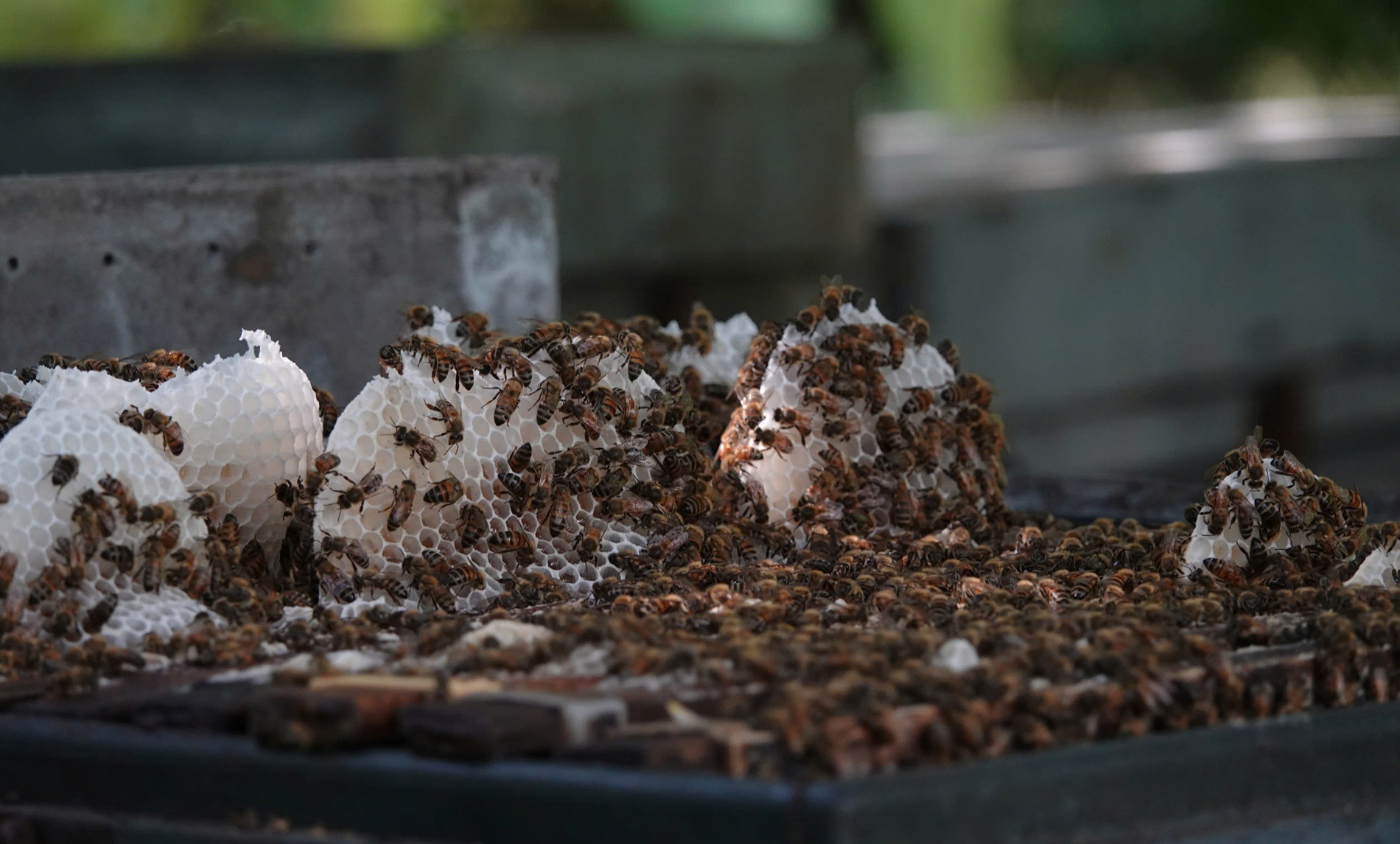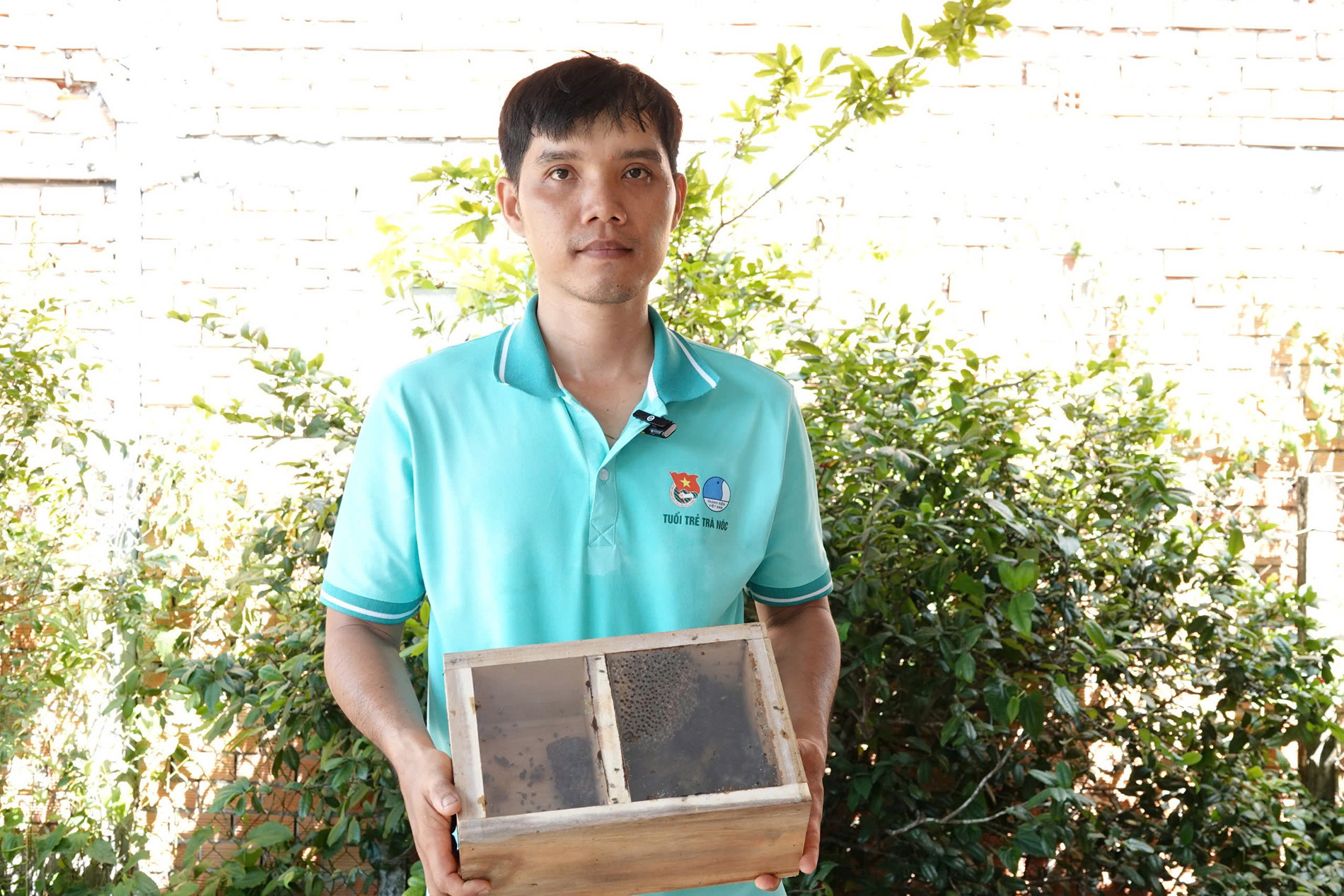Thanks to his thriving beekeeping operation, Nguyen Kim Trong from Can Tho collects around 2,000 liters of honey each month. At a price of 300,000 VND (approximately USD 12) per liter, his monthly revenue reaches an impressive sum.

On a warm June morning, 34-year-old Nguyen Kim Trong can be found tending to his 300 hives nestled among mangosteen trees in Can Tho City.
Born into a farming family in Binh Thuy District, Trong completed high school, served in the military, and later earned a degree in medical assisting. He found stable work at a food processing company in Hau Giang, but his ambition was always to run his own business in his hometown.
In 2021, Trong began his entrepreneurial journey with honeybee farming. Initially, he caught wild bees and tried to domesticate them in wooden boxes placed in his garden. However, the process yielded little honey and required intensive labor.
In 2022, he learned about Italian bees through media reports and invested in five hives at nearly 2 million VND (about USD 78) each. These bees offered higher productivity and were easier to raise. Yet, he initially struggled with parasitic mites that drained larvae, killing the bees.
After this setback, Trong deepened his knowledge, researching steam-infused essential oils to kill the parasites and protect the hives.
“My beekeeping techniques came from real-world observation. I paid close attention to bee behavior to find the best solutions. From the original five hives, I’ve now expanded to nearly 300,” Trong said.

He explained that successful beekeepers must understand bee behavior, climate, geography, and flowering seasons. Hives, typically made of wood or metal, contain 8–10 honeycombs. Each hive has a queen to lay eggs, worker bees to gather nectar, and drones for mating.
Bees produce honey year-round, except during the rainy season when Trong supplements their diet with sugar water to maintain colony size. He also regenerates colonies during this time by replacing aging queens.
“During the rainy season, bees can’t forage, so it’s the best time to regenerate hives by raising new queens. Old queens produce fewer offspring, which leads to smaller colonies and lower honey yields,” he shared.
The process involves removing the old queen and placing young larvae under three days old from strong hives into artificial queen cells. Sensing the absence of a queen, worker bees secrete royal jelly to nourish the larvae, thus creating a new queen.

The young entrepreneur also warned about the dangers of pesticides.
“If bees ingest pesticides, they die en masse. Sometimes, bees exposed to mild toxins return to the hive but are rejected to protect the colony. In those cases, I detoxify them with diluted lemon juice,” he explained.
To maintain a steady income, Trong transports his hives to different provinces, allowing bees to forage from natural sources like melaleuca, plum, rambutan, and longan flowers.
He harvests about 2,000 liters of honey monthly, selling it at 300,000 VND (USD 12) per liter - resulting in a substantial monthly income.

Trong is also among the first in Vietnam to bring bees into rice-growing areas to produce honey from rice blossoms. Additionally, he creates products like coffee pollen and honeycomb honey to diversify his offerings.
“Coconut flower honey is dark, light on the palate, rich, and fragrant. Melaleuca honey has a roasted sugar aroma with a sweet aftertaste. Rambutan honey is lightly sweet, while longan honey is very rich. Coconut flower honey is especially popular because it’s not bitter - just sweet, fatty, and aromatic,” Trong described.
In 2024, Trong won first prize in the Can Tho City Startup Innovation Talent Search. He is also recognized as an outstanding young entrepreneur from Binh Thuy District, successfully launching a sustainable beekeeping model.
Hoai Thanh